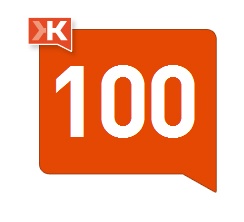
by Marianna Muscat | Mar 28, 2017 | Website Analytics
To find out whether your website is performing as it ought to, Google Analytics is an invaluable tool. Here is how to make it work for you.
- Install Google Analytics
Double check that your “web guy” has, in fact, installed Google Analytics on your site. Then create your Google Analytics account, login, and check that your website shows up.
- Audience Overview
This section of Google Analytics allows you to track various things such as the number of new users versus the number of returning visitors.
To get an idea of the power of your website, take a look at the bounce rate. This refers to the number of users who have visited only one page of your site. If they are not moving on, it could be that you need to reassess your user experience or better sign post the path you want them to take.
- Acquisition Overview
Discover what is driving your audience to your site. Be it social media, search engine optimization, or referrals, knowing how users arrive at your website allows you to focus your efforts on what is working, and improve that which is not.
- Spam Traffic
To avoid having a skewed view of your site’s traffic, you need to eliminate spam traffic from your analytics. Under referrals, look for the tell-tale signs of odd names, and bounce rates of 100%. You can then filter these out.
- Social Media Traffic
Under the Acquisition section you can see how effective each social media platform is at sending users to your website. From each platform you can drill down to see the performance of each post.
Maximize the Power of Analytics
Would you like to find out exactly how your website is performing? WSI OMS have years of experience and international collaboration in website optimisation. Contact us for more information today.

by Marelise da Silva | Feb 12, 2015 | Website Analytics, Website Content, Website Development, Website Optimization
If you’re a small business owner and your website isn’t performing as well as you hoped it would, we’ve put together a list of reasons why small business websites fail and we recommending investing in help from digital marketing specialists who can turn your website around. Think of your website as your most valuable piece of real estate; it can be seen by people around the world and the first impression it gives is crucial. So, why do small business websites fail?
- It’s poorly designed. We understand small businesses don’t often have large budgets to spend on fancy web design, but you must understand how important an attractive, well designed website is. If the look and feel of your website doesn’t inspire confidence, chances are people won’t feel comfortable investing money in your business.
- It’s hosted on a third party site. If you use WordPress, Tumblr, or some other free service, your content can be removed if it violates the hosting site’s terms and conditions. This means all your hard work can disappear overnight, leaving you without a website, so rather than relying on third party hosting sites, invest in your own website domain and ensure you fully own the site and the content.
- Your target audience is too broad. If you want to target everyone with your content, your aspirations are too high and you’ll notice your website isn’t generating any leads. Instead of having a wide target audience, you should seek to understand your target audience in as much detail as possible. Then, you can tailor everything on your site – the banner, the tagline and the content – to a very specific set of demographics.
- You haven’t integrated your social media accounts. Anyone who visits your website should be able to follow you on Facebook, Twitter, LinkedIn and more with the click of a mouse and any website updates should be published on your social media profiles.
If you would like more information about how our team of web design specialists can help revitalise your small business’s website, or if you have any general inquiries about the digital marketing and web design services we provide, please do not hesitate to contact us today. We look forward to hearing from you.

by Marelise da Silva | Aug 13, 2014 | Blogging, Website Analytics
The website development needs of clients have changed a lot over the past few years. In the past, we were focusing on flash designs and shopping cart integration features, but today a lot of the more forward-thinking companies are investing in web apps.
If you have a web app, you need to track how it’s performing. There’s no way to know where your strategy needs tweaking if you’re tracking the analytics on your app. Here are few web app analytics tools that we’ve come across:
Open web analytics
Besides Google Analytics, Open Web Analytics is one of the few free web app analytics tools on the market. It is is licensed under GPL and provides website owners and developers with easy ways to add web analytics to their sites using simple Javascript, PHP, or REST based APIs. It also comes with built-in support for tracking websites made with popular content management frameworks such as WordPress. The best feature of Open Web Analytics is the fact that it is easy to integrate.
Snowplow
Snowplow is a paid web app analytics tool that I would use for a company who needs a lot of data. If you have a large application that gets used by many people and want to be able to easily interpret the mounds of data that the app generates, this tool is for you.
Hitslink
Hitslink is another paid web app analytics tool. What’s nice about this tool is that it also measures and tracks hits from social media and the reports give you clear insights without drowning you in details and numbers.
Sessioncam
Sessioncam has free and paid user subscriptions. What makes Sessioncam cool is the fact that you get “heatmaps”, which shows how your app users are using the app. You can even see mouse movements, scrolling, clicks and other gestures that are made when using your app.
Need an experienced web development company to take care of your website and web apps? Contact us today.

by Francois Muscat | Feb 3, 2014 | Digital Media Marketing, Website Analytics
SlideShare is an online sharing tool that allows you to publicly host PowerPoint presentations, OpenOffice presentations, infographics and PDF documents and more on your own website. It is a valuable tool for businesses that want to host important presentations, keynote speeches, annual reports and other documents because it’s easily accessible, easy to use and can be easily found by people looking for related content.
But how does it increase engagement?
- SlideShare hosts your presentations on its own website as well and the site receives over 60 million unique visitors each month. That is millions of potential visitors to your website!
- Because SlideShare is mainly used by business people who are searching for business-related content, it can be an excellent way to generate leads. Use tags relevant to your presentations because there are most likely people searching for the information you’ve provided.
- SlideShare allows you to discover who is accessing your presentations, from where they are being referred and which presentations are most popular with your target market.
When you have content that ranks highly in search engine rankings like Google, it’s easier for the people you are trying to reach to find your content. In addition to ranking highly in Google search results, SlideShare presentations can now be uploaded to your LinkedIn profile for increased visibility. It’s incredibly user-friendly and costs are kept to a minimum, so if you aren’t taking advantage of this excellent tool then you may be missing out on reaching key people!
Each presentation gives you the option to e-mail it or share it straight from the website, so if you come across a particular presentation you think is ideal for your own business or for someone else, SlideShare makes it simple to share it with them using a simple click of the mouse.
Don’t miss out on quality business leads and potential customers – start using SlideShare today!

by Francois Muscat | Jun 24, 2013 | Website Analytics
Klout is an online programme that can help contribute to website analytics. When your company’s website and social media platforms are analysed successfully, you’ll have a better idea of the return on investment of these platforms and how to keep improving them.
Essentially, Klout measures influence through your ability to drive action on social media. The clever use of keywords on social media and websites helps to increase your Klout score – keywords help your audience find you, and as you inspire and engage those people so your influence increases. Studies have shown that brands with higher Klout scores tend to get more visitors and more links, so traffic is directly related to the influence you have on social media platforms.
Being able to measure your competitive advantage through analytics programmes like Klout and Google Analytics helps companies to see exactly how well their online presence is working for them, where their customers are focussed and how to improve. This kind of concrete data is essential to knowing what your social media strategy should be and how to implement it successfully.
How Klout Works:
Your score is grouped into three categories that help to determine how far your social reach is. These groups are: True Reach, Amplification Probability and Network Influence. True reach looks at the level of engagement you have with your followers and fans, Amplification Probability looks at the amount of shares and likes your content receives, and Network influence looks at how influential your followers themselves are.
This scoring process is useful to marketers and clients in analysing websites and social media success, but it should not be used in isolation. By making use of other tools like Google Analytics, your results will be more rounded and accurate than using either tool alone.
For more information on how website analytics programmes like Klout work, contact WSI today.

by Francois Muscat | Jun 10, 2013 | Website Analytics
Website analytics is the process of measuring how your website is ranking on search engines and what traffic it is experiencing. Free programmes like Google Analytics are essential for providing real, measurable statistics on how well your website is performing, what people are typing in to find you, and (most importantly) how you can improve your website where it is not performing optimally.
Breaking down website analytics:
From queries to bounce rates and click-through rates, your analytics programme will be able to break down exactly how effectively your website’s SEO is working – but to do that, you need to know exactly what these terms mean and how important they are.
- Visits – new and returning. When someone lands on your website, your analytics programme will count and track it until the person leaves the site or the session expires. New visitors and returning visitors will be tracked through cookies for additional statistical information.
- Pageviews. This is simply the amount of times that a page on your website is viewed. Because people often visit the same page multiple times in a single session, through accident or because they forgot certain information, the programme will also track unique pageviews for further accuracy.
- Bounce rates. This is the rate at which users visit your site but only look at one page before leaving. This occurs for numerous reasons, but ideally you want this rate as low as possible, as the longer people stay on your website and the more pages they browse, the better.
- Click-through rates. This is the rate at which users saw a link to your page, whether in a blog, article or on a social media site and chose to visit your website. Click-through rates are very important, as they reflect the effectiveness of your SEO strategy especially in regards to content marketing, so you want them to be as high as possible.
If you’d like more information on website analytics and how it can help drive traffic to your website, contact WSI today.







